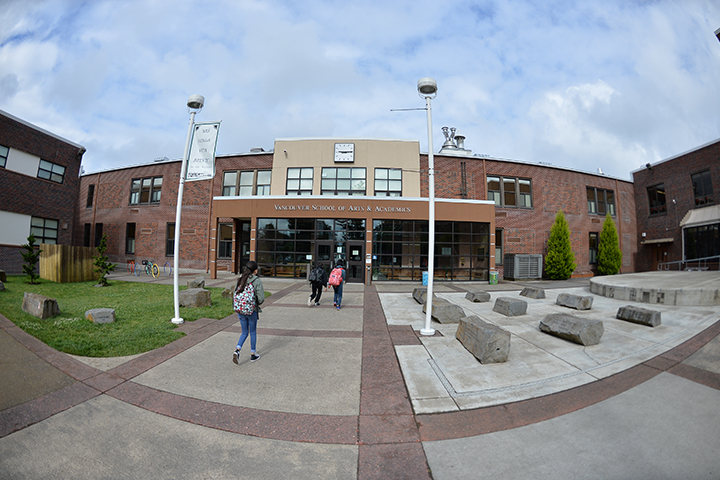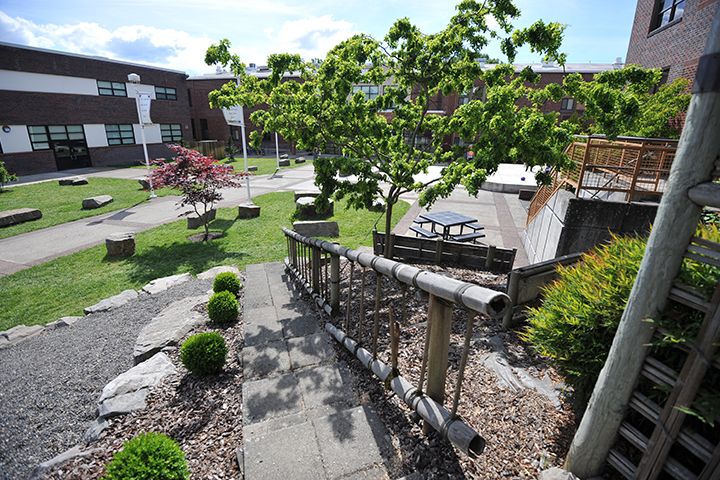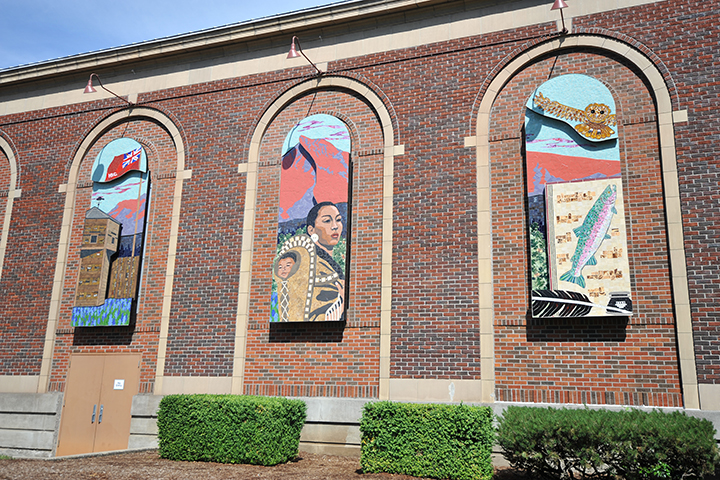Building size prevents school from fully meeting demand
The building that houses VSAA is among the oldest in the district. Formerly known as Shumway Junior High School, it opened in 1929 at what was then the outskirts of town.
Today, VSAA is an important part of the thriving downtown area. Students in sixth through 12th grades experience six art forms: dance, literary arts, moving image arts, theatre, visual arts and music. The school also focuses strongly on academics and integration among subject areas.
Parental involvement and a sense of community are vital to the school’s identity. Also important: the staff. More than 75 percent of the faculty has at least master’s degrees, and they provide one-on-one support to students through advocacy roles.
Students thrive at VSAA, with most staying all seven years of their secondary education. The graduation rate is 100 percent. Ninety-three percent of students in the class of 2016 intended to enroll in two- or four-year higher education institutions.
Today, however, the building is too small to serve its current student body adequately. It also does not accommodate local demand for arts experiences. There are many challenges:
- Capacity: Each year, this magnet school receives between 500 and 600 applications. Due to the size of the building, it can accept only 100 to 120 students. VSAA also is the hub for arts education in VPS. It holds free after-school dance and orchestra opportunities for students all over the district, arts camps and professional development for educators. Capacity limitations often mean that the number of students and people who can be involved in these activities is restricted.
- Space: While the school features many dedicated spaces—everything from dance studios to recording studios—every available space is in use, including a former closet that has been repurposed for photography. In addition, the small science rooms are inadequate and there is no official PE space for the school’s 300 middle-schoolers.
- Royal Durst Theatre: The facility serves as the venue for all-school showcases that are important to VSAA’s identity and foster the collective commitment to creativity and exploration. It accommodates approximately 540 people; however, VSAA has 590 students and 50 staff members.
- Parking: Space is limited for parking and presents a challenge whenever the school hosts large events.
The school hopes to be able to accommodate approximately 200 more students in the future. “It is a privilege to come to VSAA every day,” said Principal Lori Rotherham. “I am excited about more students having that opportunity.”
Vancouver Public Schools has a plan to do just that. On Nov. 9, the district sought input from staff members, parents, current and former students and community members who engaged in a symposium to discuss the school’s needs. As a result of their feedback, planning teams worked to create three concepts for VSAA’s future.
Symposium
A Nov. 9 symposium involved 50 people in a discussion about future learning needs and interior and exterior design considerations. Participants included Principal Lori Rotherham; Associate Principal Jennifer Hockhalter; several staff members; students Jordan Bibian, Amy Rapp, Aidan Ovall, Hailey Parkison and Kate Southerland; VSAA alum Natalie Farness; parents Tracey Jackson, Maureen Montague, Sandy Templeton and Jacquleine Wilcox; community members Karen Madsen, Kelly Punteney and Don Appert; and many more valued stakeholders.
Their feedback revealed a few key themes for consideration as plans progress for VSAA’s future:
- Sense of community: retaining VSAA’s identity as a close-knit school and culture of acceptance while expanding enrollment and celebrating diversity; honoring the school’s past, present and future
- Flexibility: altering spaces for a multitude of activities and subject areas, as well as for different learning needs, individual work and groups of all sizes; flexibility in scheduling
- Integration with the larger Vancouver community: increased community partnerships and family engagement, establishing VSAA as a welcoming hub of artistic activity in Vancouver for learners of all ages and providing students with real-world learning experiences
- Creative, academic exploration: allowing for experimentation without expectation, art form crossovers, innovation and hands-on learning
- Technology: opportunities to use technology in new ways to expand both learning and artistic processes
- Physical environment: using nature to learn and study science concepts; better using the site to serve operational needs such as dropoff, pickup and parking; and preserving the historical character of building




